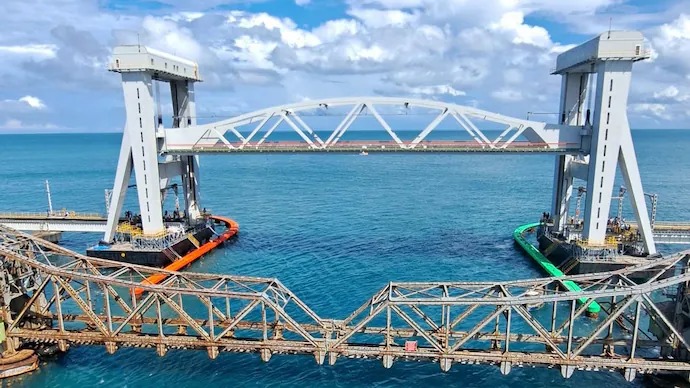The Pamban Bridge, situated at Rameswaram, Tamil Nadu, is a reflection of India's great engineering heritage. The bridge, opened in 1914, was India's first sea bridge and the longest one until the construction of the Bandra-Worli Sea Link in 2010. This iconic bridge links Rameswaram Island with the mainland and has played an important role in ensuring rail connectivity to this sacred pilgrimage destination. The bridge has a distinctive double-leaf bascule section, or Scherzer rolling lift span, that can be lifted so that vessels can pass underneath. Though constructed more than a century ago, the Pamban Bridge has endured numerous natural adversities, such as cyclones and turbulent sea conditions. Its long-standing existence is a testament to the creative engineering and architectural prowess of its British builders.
The historical value of the bridge goes beyond its engineering wonders; it has developed into a cultural icon, visited by tourists and pilgrims alike. Its form is a combination of functionality and beauty, an architectural marvel that still inspires generations. The legacy of the Pamban Bridge is also widened by its recent retirement, as a new, high-tech bridge is being built to facilitate continued accessibility and security.
Sources: The Better India, Incredible India, Wikipedia

